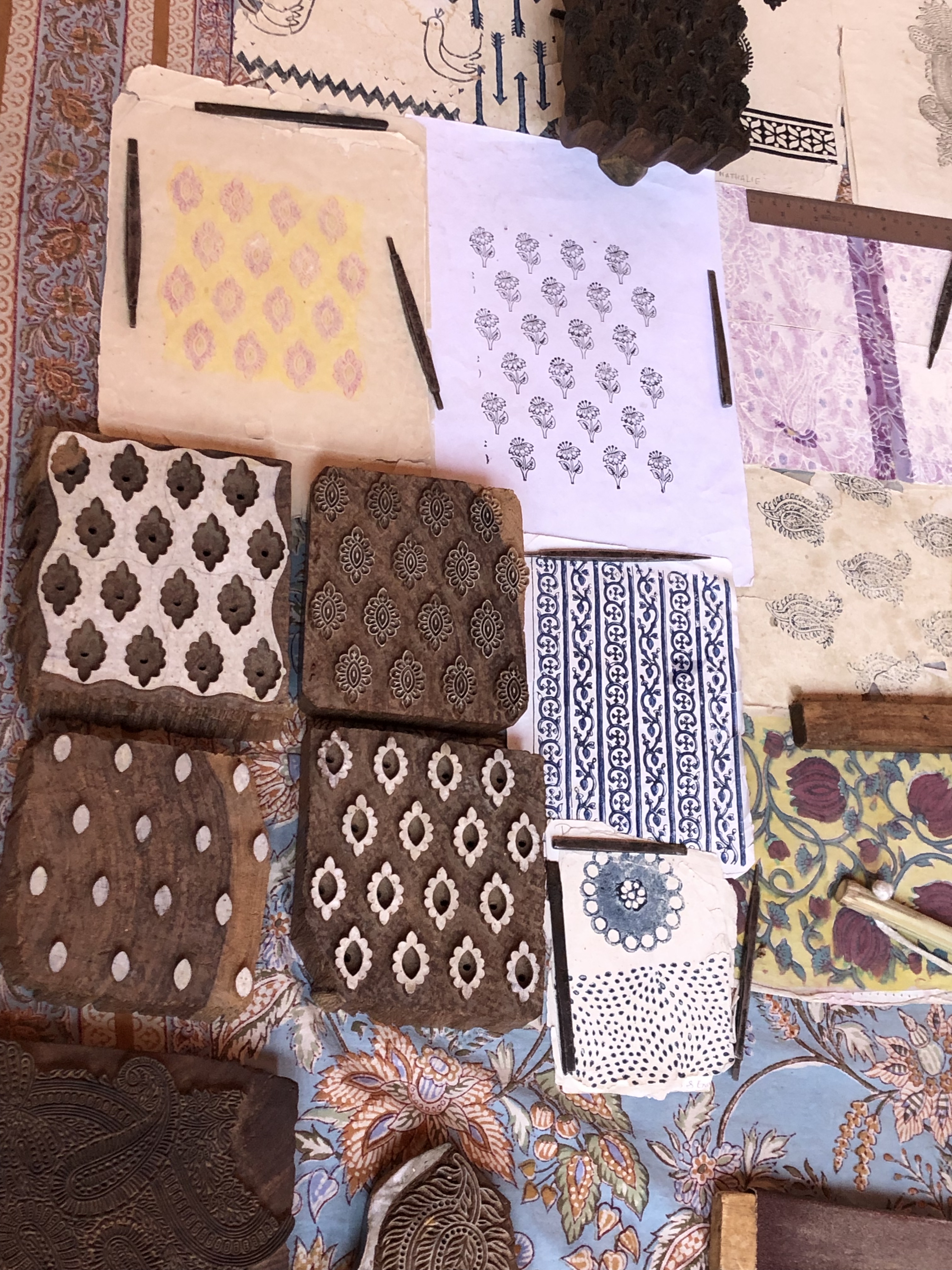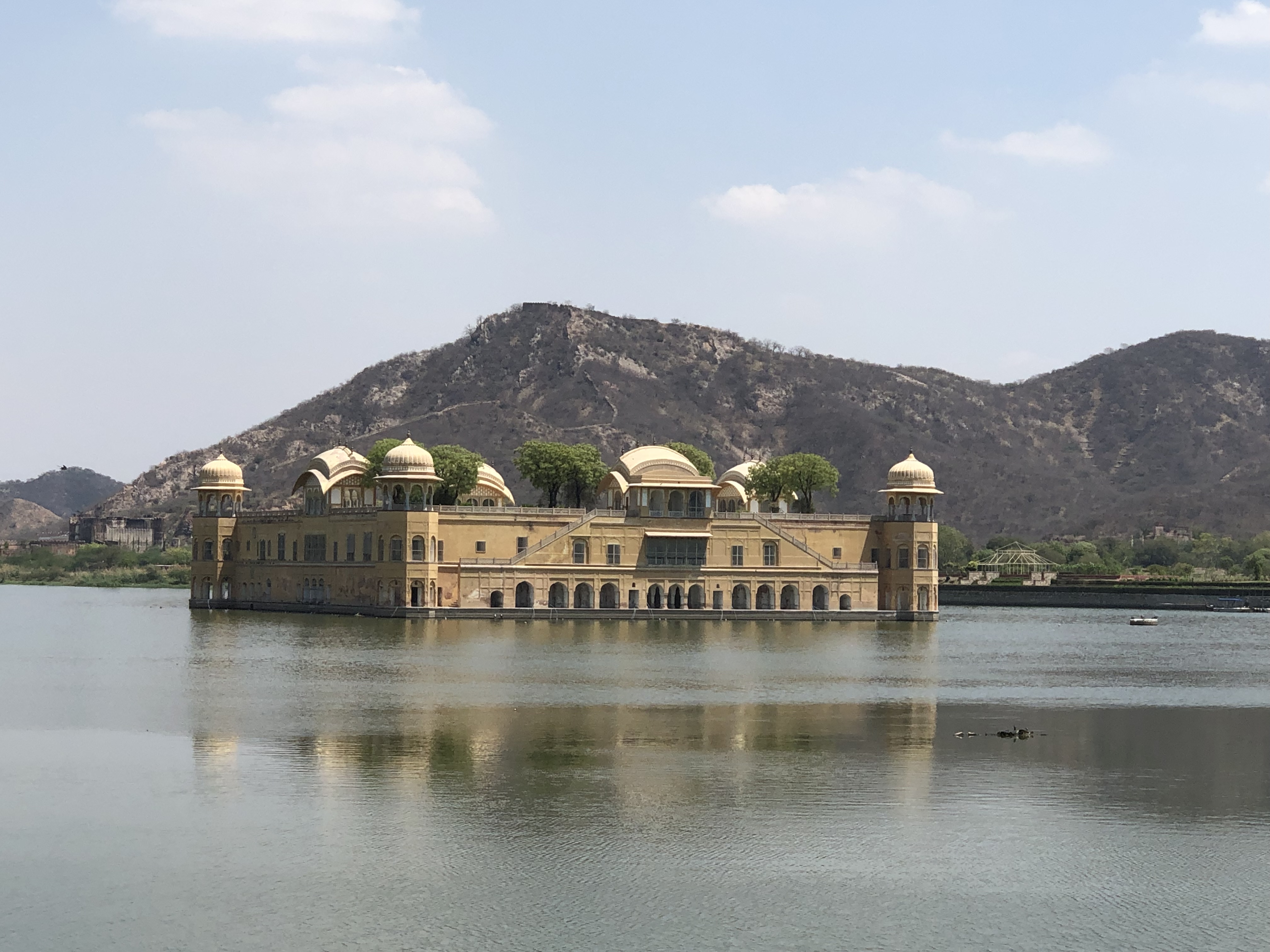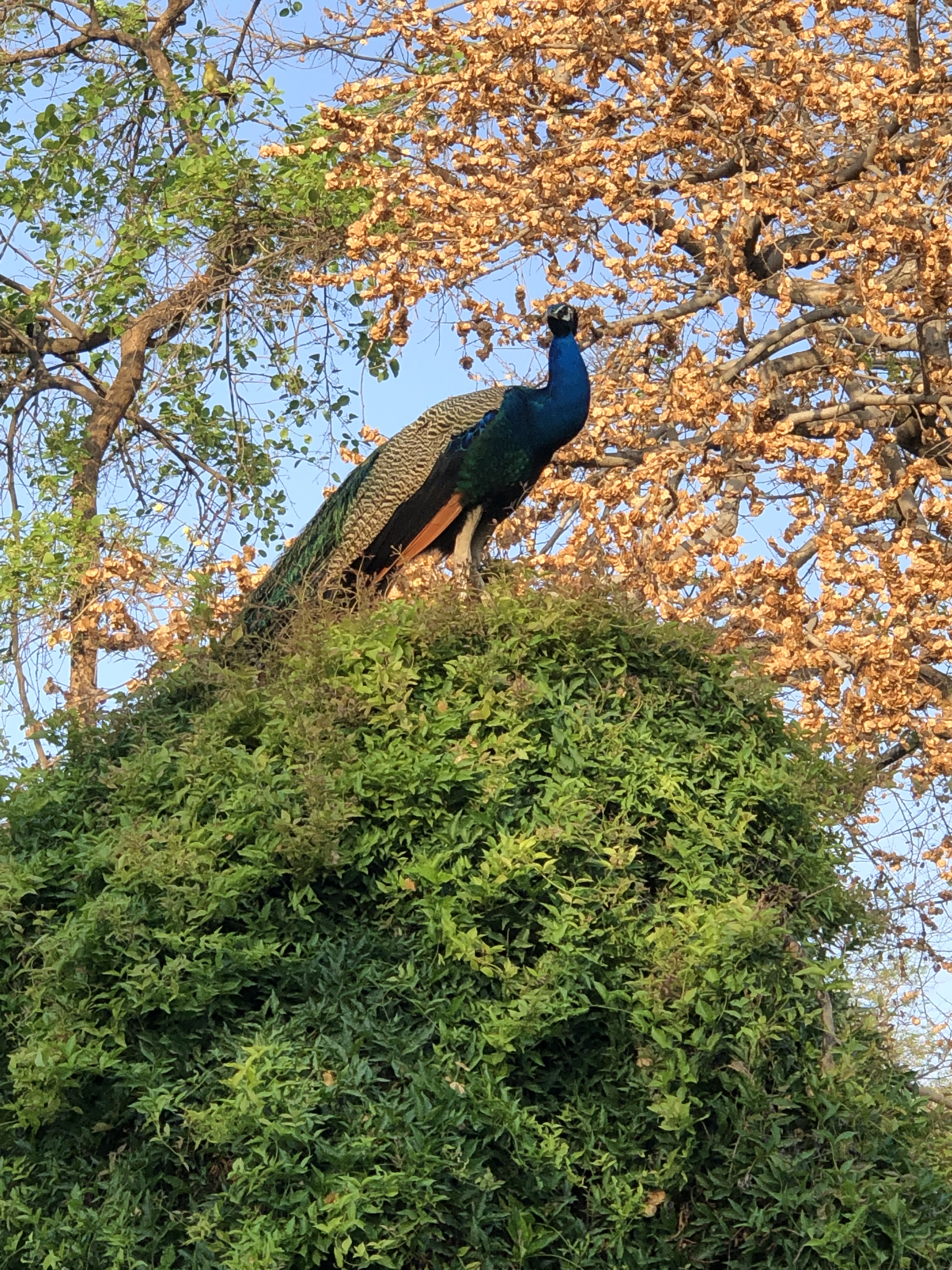Let imaginations run wild as you explore flamboyant doorways, hidden corridors and opulent courtyards of a bygone era. Set amongst compact homes and bustling streets, where motorbikes weave around plodding camels and impatient rickshaws brush past colourful saris, the many forts and palaces provide a sanctuary of calm.

Padmanabh Singh is the 20-year-old ‘king’ of Jaipur, India.Although he’s not officially considered a king by the state in democratic India, his position is still respected.Singh is a polo star who has studied at New York University and has walked the runway in many fashion shows.

Jaipur, affectionately known as ‘The Pink City’ due to the colour of the buildings in the old town, makes up part of India’s popular ‘Golden Triangle’. The city of Jaipur was founded in 1727 by Jai Singh II, the Raja of Amer who ruled from 1699 to 1743. Jaipur is predominantly known for its precious gems , astrology , block printing and handicrafts and its famous rajai (blanket/comforter) which is so light that it can be packed in a man’s handkerchief.

Travelling in Jaipur is fun. You may opt for a colourful rickshaw ride or find yourself comfortable in easily available taxis or plan to roam on foot. The choice is yours but make sure that you wear comfortable footwear, breathable and light.Now that you are travelling with kids,plan for early starts and late afternoons to beat the heat (especially if travelling outside of the winter months) and ensure you are stocked up on snacks and water (it can be difficult to get hold of once inside the forts and palaces).
Day 1
City Palace and Museum
Welcome to the world of royalty and grandeur. Beautiful arches and equally beautiful artefacts. Two huge silver pots adorn it’s “diwan e aam”( House of Commons) which were used to carry water from the holy Ganga to England. The “diwan e khas” was we’re royal decisions and strategies were made. The museum housed age old artillery, clothing , ornaments and royal belongings. Belgium cut stained glasses art adorns its ceilings while a grand chandelier again made of Belgium crystals decorates its house of royals.

Beautiful arches, thoughtful architecture and paintings illustrate the riches and quality of artisans at those times. Very interesting was the courtyard which had four doors each representing a season and thus it’s usage. Peacock , lotus , sun and moon symbolising autumn, spring , summer and winter.

Jantar Mantar


This astronomical wonder fills me with awe and leaves me amazed to wonder the knowledge and precision in those times to monitor the movement of the sun or its altitude. It features the world’s largest stone sundial, and is a UNESCO World Heritage site.
Hawa Mahal

Located very close to the city palace is the Hawa Mahal, as the name suggests it has vents and windows all around it to promote cross ventilation and thus is very pleasant even in blazing summers. It is built using red and pink sandstones. Did you know, it’s architecture resembles the crown of lord Krishna as Jodha ( the then princess of Jaipur ) was a devotee of the lord.

Jouhri Bazar

From jewelry to textiles and footwears, exotic pottery to handicrafts, Jaipur has got them all. The oldest market of Jaipur is Johari Bazaar, and most of the shops in this market are painted in pink. Women flock here, as this market sells exquisite Jaipuri jewelry made of gold, silver, diamonds and emeralds. Kundan jewelry is quite famous and a popular item here.
Bapu Bazar
Situated in the heart of the Pink City between Sanganer Gate and New Gate, the market is known for its alluring Rajasthani products including textiles, handicrafts, brass works and precious stones. Jutis, camel leather products and other handicrafts are also popular items sold here.
Gulab Chand
Of all the boutiques and stores in Jaipur like Ratan’s , Cotton’s or exquisite luxury shops at Kanota gate, Gulab Chand is most famous for its prints and price policies. It’s a one stop shop for all age groups, men and women alike along with authentic Jaipuri prints in house furnishings too. No stop in Jaipur is complete without a stop here.
Albert Hall Mesuem
Albert hall museum displays beautiful artifacts but most promising was the show of colours in the evening at this square. Lighted by numerous colours it is a travellers delight.
Patrika Gate

Patrika gate gives you a sneak peek into the vibrant culture of Rajasthan as each pillar is dedicated to some or the other part of the state. Hand paintings of temples, forts, palaces, portraits of Jaipur rulers, blue pottery, jewelry, photographs of Amer, Hawa Mahal, City Palace, Jal Mahal are found here to give a glimpse of the entire history of Jaipur. There were some nostalgic & proud examples of scenes depicting weddings, wars and daily lives of people showcasing the way they earned their livelihood, all artistically portrayed in lively colors.

Day 2
Amber Fort

Amer Fort is built in Amer, a town in Rajasthan.The town of Amer was originally built by Meena and later it was ruled by Raja Man Singh I. Amer Fort is known for its artistic style elements. With its large ramparts and series of gates and cobbled paths. It was built keeping astrology and vastushastra in mind and the king then had great knowledge and interest in the subject.

Constructed of red sandstone and marble, the attractive, opulent palace is laid out on four levels, each with a courtyard. It consists of the Diwan-e-Aam, or “Hall of Public Audience”, the Diwan-e-Khas, or “Hall of Private Audience”, the Sheesh Mahal (mirror palace), or Jai Mandir, and the Sukh Niwas where a cool climate is artificially created by winds that blow over a water cascade within the palace.

Meena Panna Ka Kund

Built during the 16th-century reign of Maharaja Jai Singh, the baori’s geometric staircases are a stunning combination of ingenious Indian engineering and architectural beauty; the symmetrical arrangement of stairs in a criss-cross manner, the recessed doorways and the octagonal gazebos. However, the design is originally intended to be more practical than aesthetic, created as a way of collecting the monsoon rains and preserving water for the drier months and designed in such a way that people could reach water at any level as the pool rises and falls. This made the step well was a centre point for the community, used as a water source, bathing pool and for washing clothes. It was a meeting spot for the women; a place to chit-chat and catch up on each other’s lives. Why steps? The local guide told us that the steps were built to maintain the health of the folks visiting the well. The water looked green here and is expected to be 30 mts deep at this point in time. Visitors are not allowed on the steps anymore.

Anokhi Museum

The art and science of block printing, and the history of fabrics is fabulously displayed and explained at this museum situated very close to the Ameer fort. Use of vegetable dyes and blocks for designing and printing is a time consuming intricate and delicate art. Making of blocks in itself is a challenge and some may take days to construct depending on its design elements. A simple pattern itself takes a couple of blocks to complete all made with the same precision but filling colours at various stages.


Blue Pottery Art Center

The name ‘blue pottery’ comes from the eye-catching cobalt blue dye used to color the pottery. They products such at pots and tiles are glazed and low fired.. No clay is used: the ‘dough’ for the pottery is prepared by mixing quartz stone powder, powdered glass, Multani Mitti. The pottery is decorated with animal and bird motifs . Flower designed placed in symmetry are also used in their style of art. None the less, I got a neck piece customised from here to suit my style too.
Jal Mahal

Jal Mahal is a palace in the middle of the Man Sagar Lake in Jaipur city. It is now a private property and entry into this palace is barred for public. This low-rise symmetrical palace, that once was a shooting lodge for the Maharajah, appears to float in the centre of Sagar Lake. The light sand coloured stone walls of the Jal Mahal Jaipur are at a stark contrast to the deep blue of the waters of the lake and this perhaps makes it extremely camera friendly.
Elephant Village

Elephant village in Jaipur is a small community village that was set-up by the local government of Rajasthan in 2010 to provide a proper shelter & water facilities to the families who take care of Elephants along with providing a natural habitat for these giant animals surrounded by the Aravali mountain ranges. You could paint, feed, scrub and ride the elephants at leisure here. Though the children had fun painting the animals I think this was an overrated place.

Where we ate ?
Tapri got redefined street food along with school which also serves food in similar taste but a different setting and ambience of a classroom.Rawat for pyaz ki kachori and lassi. Masala chowk for a variety of food and tastes , Chowki Dhani for authentic Rajasthani taste of dal baati and churma along with traditional dry vegetables like kair and sangari , mangori and gatta. Shikar bagh for a luxury sit down meal and my favourite bar palladio for its ambience and choice of drinks.


Where we stayed and why?
Narain Niwas Palace Hotel was our home for 3 nights and 2 days. This “the best exotic marigold hotel “ famed hotel was our choice because I wanted the kids to experience life in a palace like property as opposed to a five star hotel. A place where they could wake up the sound of the peacocks in the morning and enjoy folk music and dance at night.


What to buy in Jaipur ?
block printed kurtis and shirts, lacquere bangles, meenakari jewellery , gem stones, jooties and chappals, rajai and pashmina shawls,lehenriya and bandhani dupattas, lehengas Along with handicrafts and souvenirs.

What to expect in Jaipur?
Luxury, hospitality, grandeur, royalty at its best , rajasthani music and folklore.

Hope you enjoyed your visit to Jaipur through my lens. Do check out my attire in Jaipur comprising of comfortable block print camel leather jooties and sandals, block printed cotton tops , silver bangles and a cloth bag again of block print origin and cotton pants.
Happiness and sunshine 🙂
Nidhi
Great post – Jaipur is one of my favourite cities in the world and every time I go to India I spend several days there. Like you, I’m really amazed by Jantar Mantar and the guides there make it especially amazing as they can demonstrate the instruments for you. Imagine – all of this, to this precision, was done in 1734 with the technology available then. No satellites, no electric calculators. Telescopes, simple astronomical tools, pencil and paper. It is mind blowing.
LikeLiked by 2 people
Absolutely the kids were in awe and had so many questions to ask . A well deserved unesco site 🙂
LikeLiked by 2 people
One of the most detailed and lively travel posts I have come across. Each and every frame complements your words and each and every word turns into reality. I was in Jaipur at the beginning of the year and your post brought back those memories. You have a unique style of expression that is scintillating.
LikeLiked by 2 people
Thank you so much for these warm words of appreciation.
LikeLiked by 1 person
I am glad to be able to bring back those memories to you. Have a beautiful day 🙂
LikeLiked by 1 person
You too 😀 .
LikeLiked by 1 person
Do check my blog post if you feel like :).
https://onelife513532705.wordpress.com/2019/03/27/gulabi-nagri-the-pink-city-jaipur/
LikeLiked by 1 person
You have a beautiful family – God bless – You depicted Jaipur so well. One place in my bucket list
LikeLiked by 1 person
Thank you Shantanu. Jaipur is in the golden triangle along with Agra and Delhi and should not be missed. All the best . Padharo mahre Desh.
LikeLiked by 1 person
I lived in Delhi for few years and come to Delhi now almost 5-6 times a year. Still for some reason never visited Jaipur. Thank you for your note
LikeLiked by 1 person
Then you should plan a visit to Jaipur during the winter months sometime 🙂
LikeLiked by 1 person
I certainly will. Thanks
LikeLiked by 1 person
Lovely
LikeLiked by 2 people
Thank you
LikeLike
What a sweet family! Loved, loved, loved the Jaipur visit. You did such a nice job of laying out all the details and holding our hands and taking us with you! Thank You! 🙂
LikeLiked by 1 person
Thank you Krishnapriya , glad you lived to ride with me on this trip . Looking forward to more such endeavours.
LikeLiked by 1 person
Me too! Look forward to more arm chair travel and cute and wondrous pics! 💛🌹👍
LikeLiked by 1 person
Haha great, stay tuned
LikeLiked by 1 person
Great blog Nidhi!! It’s always a pleasure to read your posts!!
Keep blogging 😘
LikeLiked by 2 people
Thank you Aarti 🙂 it’s a pleasure to receive your valuable feedback always 🙂
LikeLike
What a beautiful and visual narration to Jaipur! I could see the city and its culture come alive! Such beautifully crafted words and it transported me to Jaipur… its so detailed that I felt am a part of the city and culture . Needless to say Blue pottery studio, anoukhi museum and silver jewellery shopping are my favourites! Keep traveling and sharing such crafted articles!
LikeLiked by 2 people
Oh Anu, I am so grateful for these words. Travelling is bliss and I love it. Will share the pic of my customised neckpiece with you on what’s app. Have a blissful night love 🙂
LikeLike
Looks like you guys had a great fun. You have covered some of the most amazing places and done it the right way in your schedule. Gulab Chand is my favorite as well because I love hand block printed shirts. Technicality, a lot of the stuff is not really hand made but wearing one does lend you some unique style! Great post, Nidhi.
LikeLiked by 2 people
I agree they also see the commercial side of things. Moreover hand printing is labour intensive and time consuming, but at least they have not over commercialised .
Thank you Arv , coming from a Jaipur himself , this is huge .
LikeLike
It’s a Pandora’s box! A debatable topic. Nothing wrong with either sides.
Since you are an artist yourself, who can understand it better?
LikeLiked by 1 person
Agree to this , sustainability in this competitive market sometimes plays spoil sport. But as long as the end result is desirable it’s ok I guess .
LikeLiked by 1 person
true
LikeLiked by 1 person
Thank you very much, dear friend, for all those interesting information and lovely photos from Jaipur – I love the fantastic old style of brilliant architecture – I have been to India myself many many times, but have not had yet the opportunity to visit Jaipur.
Great, you spent a lovely time with your family there 🙂
All good wishes, dear friend
Didi
LikeLiked by 2 people
I am so happy to hear this Didi. Makes my day 🙂
LikeLiked by 1 person
…then it also makes me happy 🙂
Have a nice time, my friend 🙂
Didi
LikeLike
Sounds like great destination❤️
LikeLiked by 1 person
It absolutely is 🙂
LikeLike